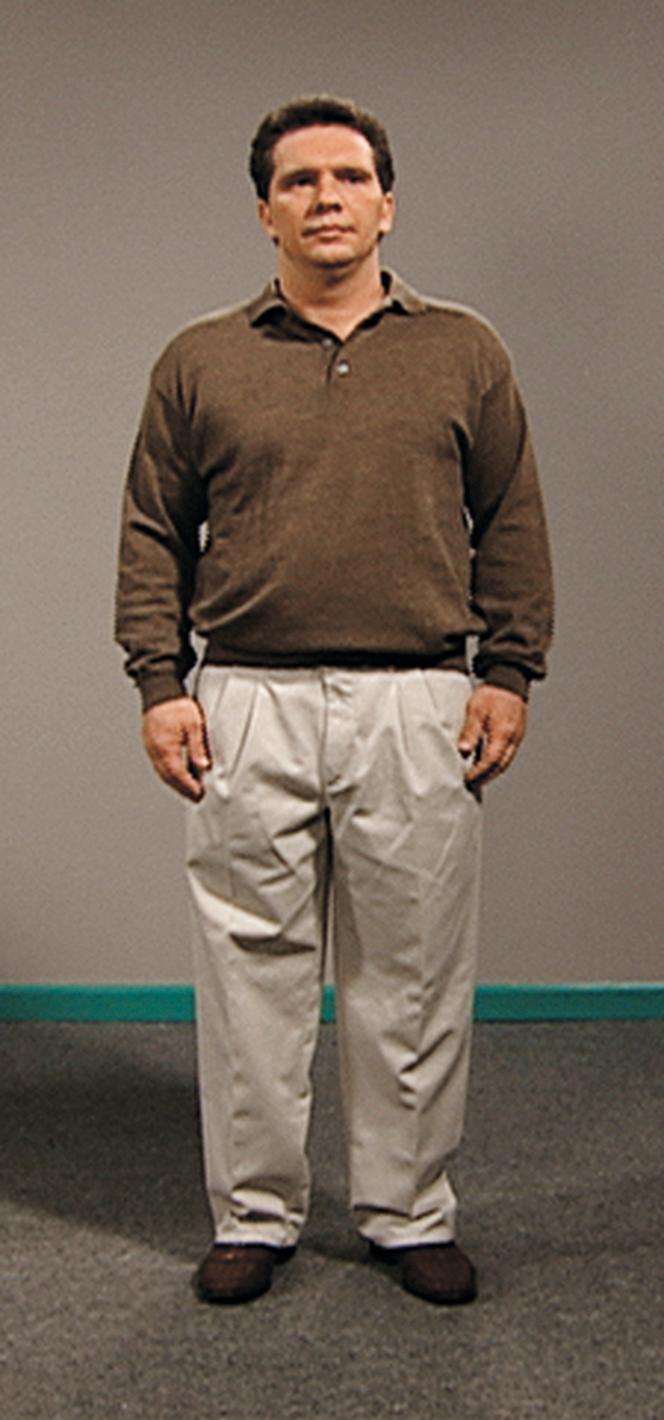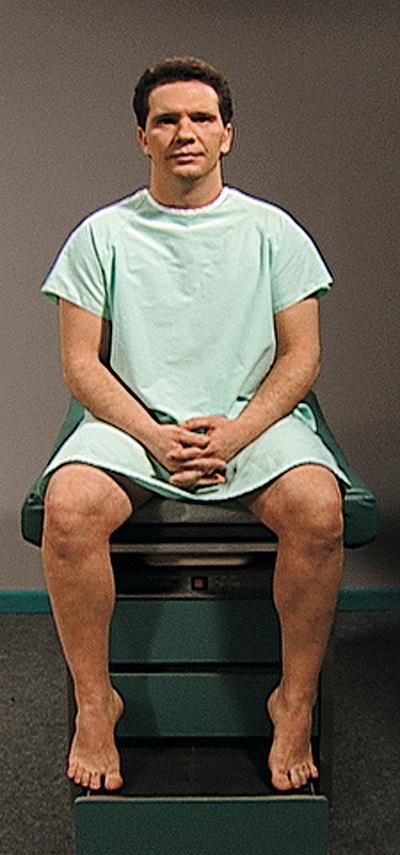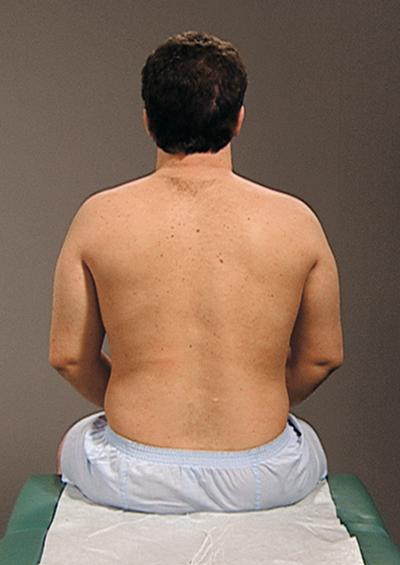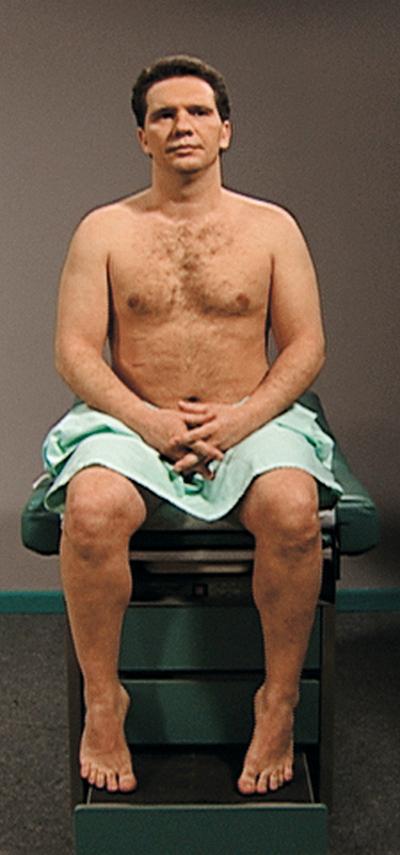Physical Address
304 North Cardinal St.
Dorchester Center, MA 02124
This chapter asks that you integrate all you have learned about interviewing, building a history, and performing the physical examination. It offers a suggested approach and sequence for performing all steps of the physical examination. However, each patient presents with unique circumstances, and flexibility in your approach and examination sequence is encouraged. With experience, you will adapt easily while listening carefully to your patients and ensuring their active participation in their own care.
The relationship with the patient begins with respect and good manners. The relationship becomes well established through the powerful therapeutic effect of carefully listening to what the patient says, exploring concerns, and explaining information without patronizing or judging. These actions communicate to the patient that you care and they are your full partner ( Box 24.1 ).
Ensure good communication with courtesy and provision of comfort, connection, and confirmation (see Box 2.2 , Chapter 2 ).
Dress neatly and be well groomed.
Patients are culturally diverse, so use the patient’s language if possible. It is important for you to be understood, so use colloquialisms if needed. Do not use complex medical terminology.
Avoid distraction and interruption, except for an emergency.
Adapt to the patient’s circumstance. An older adult in a wheelchair is a different challenge than the infant on the parent’s lap.
Be flexible, but be certain at the end that all the necessary observations were made.
Make sure the examining table is positioned so you can access the patient from every side.
Have the patient comfortably draped, paying attention to modesty at every age. Adequately expose the part of the body to be examined or you may lose the vital finding.
Always consider the need for a chaperone.
Keep your hands and stethoscope warm.
Do not probe too vigorously when examining tender areas.
Explain what you are doing and anticipate the patient’s concern about what comes next. State the reasons for examining an area and warn of any potential discomfort.
Ask the patient to do things; never order. Say “please” and “thank you.” Occasionally ask if the patient is comfortable or has any questions.
Observe the patient’s demeanor and body language. Apathy, disinterest, or inability to offer a social smile are equally worrisome in adults, infants, and children.
Be objective as you assess the patient. Make no premature assumptions about what you find.
Describe first without diagnosing. Do not voice impressions prematurely. For example, a lump in the neck may be a swollen node and not a cyst. Diagnosis can usually wait until all the data are in.
Remember that physical findings have meanings that vary according to age.
Be reassuring only when you honestly can. Do not make promises you cannot keep.
Pace the assessment according to the circumstance, the sense of urgency, and the recognition of fatigue and frailty. It is not necessary to do it all at once. Allow for rest and return later to finish up.
Building the history and performing the physical examination is subject to your style and comfort. Be flexible in your history-taking routine so that the patient’s true story is revealed. Consider starting the interview with “Tell me about yourself,” and then listen to hear the story.
The physical examination, the “laying on of hands,” is integral to the history, making it possible to understand the objective findings—the disease—but also the great variety of subjective findings that modify the patient’s experience with the disease. Technological expertise is a complement to, rather than a substitute for, the skillful physical examination.
At the first meeting, explain your level of training, and let them know that you may be more tentative than an experienced healthcare provider. The pressure and uncertainty you feel about your ability will fade as time, experience, and appropriate supervision help build your self-confidence.
The history and physical examination do not have to be completed in a special sequence or in the same sequence in which you will record them. They can be integrated to meet the needs of the patient or the demands of the moment. For example, if deviations from the expected physical findings are found, ask additional questions during the physical examination to expand or clarify historical information heard earlier. In this case, you are adapting to circumstance by using clinical judgment. This varies with the nature of the patient’s concern, the age, gender, and cultural background of the patient, and even findings during the physical examination.
The patient with a concern and a probable vulnerability may be uneasy, anxious, or even fearful ( Box 24.2 ). Patients evaluate you during the examination and gauge their anxiety by your manner, hesitations in speech, changes in facial expression, and time spent examining a part of their body. Some patients equate the gravity of the situation with the length of time you spend, but others equate length of time with thoroughness. One approach is to consistently provide an explanation about which part of the examination comes next and to be honest about any potential discomfort or pain and how long it will last. Check with your clinical supervisor before sharing your opinion about unexpected examination findings. Avoid inappropriate reassurance, and do not offer premature assumptions about unexpected findings.
Sometimes we find ourselves reacting negatively when patients do the following:
Seem insatiable in their demands, wanting and feeling entitled to preferential treatment, seeming always on the edge of a lawsuit, and often impressed with their self-determined status in society (the VIP), but are really quite dependent
Deny conditions or seem self-destructive—for example, being inattentive to instructions or not following treatment regimens
Reject, distrust, always test your competency and reliability, and express pessimism about the efficacy of your effort
Try to understand the patient’s needs and insecurities. Remember that patients often bring fears and worries to the encounter that are unrelated to their health (e.g., recent argument with partner, financial stress). Show respect and use all available supportive resources. Strategies that may help include the following: be clear and precise, keep all promises, set firm limits on what you can do, and try to maintain a compassionate approach. This may enable your partnership to mature, even if it is painful at times.
Despite patients’ vulnerabilities, they often are inclined to give the healthcare provider a chance to gain their trust and respect.
Once you have obtained the basic history, assess urgency, the nature of the concerns, and the body systems involved. Then perform the physical examination, paying particular attention to the body systems of potential concern. You may need to ask more questions or even return to the physical examination to gather all of the needed information.
Do not assume that your initial list of differential diagnoses is certain. The patient may have an unusual presentation of a common problem, a common presentation of a rare condition, more than one disease process, a co-occurring emotional or social problem, a new illness superimposed on an existing one, or a combination of any of these factors. Do not ignore any fact or finding that does not fit your initial hypotheses or assume that a single diagnosis exists when two or more may be present. Do not squeeze findings to fit your initial hypotheses regarding the patient’s symptoms and fall prey to premature closure (see Clinical Pearl, “Respecting Your Instincts” ). With all pathophysiologic and psychosocial possibilities in mind and with probabilities and urgency dominant, constantly challenge yourself and resist being tightly bound by your initial impressions. See Chapter 4 for more information on clinical reasoning.
Respect your instinct whenever you come across the unexpected, whenever your sense of what you might call normal has been violated. Pay attention when that happens, even if it does not seem to make sense or you cannot explain it easily.
You and the patient have responsibility for the reliability of findings and observations, but yours is greater. Take the time with open-ended questions to ensure that the patient has the opportunity to report fully and accurately. Ask follow-up questions as needed. Several things can limit the patient’s ability to observe well and to report accurately:
Sensory deprivation. A partial or total loss of any sense (e.g., vision, hearing, touch, taste, or smell) is clearly constraining. Do not expect the unaffected senses to be heightened. This may occur with some persons, but not all.
Emotional constraints, apparent and unapparent. Patients who are psychotic, delirious, depressed, or otherwise seriously emotionally affected may confuse you. When you suspect this, carefully and objectively assess mental status during the history and physical examination.
Language barriers. Patients may speak a language different from yours. Translation can be difficult in the best of circumstances, even when using a professional interpreter. Passing messages among three persons may potentially change the meaning and interpretation of important information, and confusion may be the result. Even using the same language may be a problem if the patient has a limited vocabulary, speaks English as a second language, or cannot read it very well.
Cultural barriers. Consider the probable differences between you and the patient with candor and compassionate inquiry (see Chapter 1 ). Gender, race, and ethnicity may be obvious differences. Consider other barriers, such as the life experiences among persons who are overweight versus underweight, those with hearing impairment versus normal hearing, gravely ill versus well, transgender versus cisgender, and older versus younger. Display respectful curiosity by encouraging conversation about such differences. Uniformity is not part of the human condition.
Identify limitations that may affect accuracy and take the steps to enhance reliability. For example, the patient with a hearing impairment may need a response that facilitates communication such as use of a telephonic device for the deaf, loud language, written questions, sign language, or lip reading enhanced with good lighting, talking slowly, and keeping your lips visible to the patient. Remember that a person with hearing impairment cannot read lips through a mask and those with severe vision impairment cannot see your gestures.
Family, friends, or an emergency medical technician are a frequent resource for collateral information. If possible, make the patient aware that others are providing information. When possible, the patient should set the limits regarding information that can be shared. Autonomy and confidentiality are always in play.
At times a patient may be considered a “poor historian” because of life situations, disease state, limited cognition, indifference, or apathy. Other situations may involve patients with emotional or psychological problems that lead to distortions such as overstatements or understatements of reality. Each of these possibilities requires skill and sensitivity to obtain the most accurate information possible. Often collateral information or supporting information from previous health records is needed. Avoid using the descriptor “unreliable” in the health record because of its negative connotation.
We are all susceptible to error. A practitioner may palpate the same abdomen at different times on the same day and conclude that the liver span is somewhat different each time. Multiple healthcare providers may palpate the same abdomen on the same day and report different liver spans. This demonstrates the potential for error in each of us, and the same error may occur with many of the diagnostic tests ordered for our patients ( Box 24.3 ). Every observation has a certain sensitivity (i.e., the assurance that if a patient has an abnormal examination finding that it will be found) and specificity (e.g., the assurance that a healthy patient will not have the abnormal finding). No observation or test has 100% sensitivity and specificity. Candidly question yourself and seek confirmation from others when necessary to minimize your errors.
Your perceptions of the patient from looking, listening, touching, and smelling are better than any machine. Mechanical imaging cannot capture vitality, apathy, or cognitive awareness, but technology can expand our insights. Just like our observations, technological procedures do not always result in highly sensitive or specific findings. Other potential limitations include the needle anxiety and pain, use of irradiation, potentially toxic contrast agents, and in the case of magnetic resonance imaging, intimidating sound and confinement. Remember that all technological procedures, as well as all that we do, have a potential cost to the human body, to emotion, and to finances.
The potential of error increases uncertainty and the healthcare provider’s discomfort. It is more comforting to think in a deterministic or mechanistic fashion, seeking certain and fixed knowledge and avoiding subjective impressions. We cannot always express our findings in numbers, and probabilities cannot be avoided, but we still try. For example, we use scales (assessment tools) that have several variables requiring a subjective judgment and the assignment of a fixed number to quantify each variable leading to a total score (consider the Glasgow Coma Scale and the Apgar score). That fixed number is really a pseudo-quantification, or proxy indicator of severity. Such scales may provide a false comfort in the apparent certainty of numbers. The mature clinician is one who is comfortable with probabilities and making decisions with a degree of uncertainty.
No one right way exists to perform the physical examination so that the process flows smoothly, minimizes the number of times the patient has to change positions, and conserves patient energy (e.g., when the patient is ill or frail). You need to adapt to the particular setting and patient condition or abilities. Box 24.4 gives a list of supplies you should have on hand. Be sure to wash your hands and don the appropriate personal protective equipment (PPE) prior to the examination.
Cotton balls
Cotton-tipped applicator sticks
Drapes
Examining gloves
Gauze squares
Lubricant
Marking pen
Measuring tape
Monofilament 5.07 (optional)
Nasal speculum
Odor-testing substances (optional)
Ophthalmoscope
Otoscope with pneumatic bulb
Penlight
Percussion hammer
Pulse oximeter
Ruler
Sharp and dull testing implements
Sphygmomanometer
Stethoscope with diaphragm and bell
Taste-testing substances (optional)
Thermometer
Tongue blades
Tuning forks
Vaginal speculum
Visual acuity screening charts for near and far vision
Culture media
Glass slides
KOH (potassium hydroxide)
Occult blood–testing materials
Pap smear spatula/brush/broom, fixative, and container
Saline
Sterile cotton-tipped applicators
Modesty matters, but do not let it deter examinations essential for appropriate care. Have comfortable patient gowns and appropriate drapes available. Close doors and curtains. It is also best to leave the room when the patient undresses and prepares for the examination. Do not assume that the patient has the same comfort with the situation that you do.
Always consider the need for a chaperone for the patient, especially for age, gender, specific examinations (e.g., genitourinary, breast, and rectal examinations), or with psychologically unstable patients. Consider a patient’s sensibilities or the “difficult” patient when making a chaperone decision (see Box 24.2 ). The chaperone may also be valuable in assisting with patient positioning. Become familiar with your healthcare facility’s policy regarding chaperones to provide assurance to patients that the examination will be performed in a professional manner, and to protect the healthcare provider should the patient make a false accusation.
Begin the inspection as you greet the patient, looking for problematic signs. You can perform parts of your physical examination any time the patient is in your view, during the history, or even in the waiting room ( Fig. 24.1 ). If you go to the waiting room to invite the patient into your examining room, take a moment to observe the appropriateness of dress and grooming, manner of sitting, degree of relaxation, relationship with others in the room, and their degree of situational awareness. On this first greeting, you can take note of the manner with which you are met and the palm’s moistness when you shake hands. Remember not to squeeze too hard when the patient is unknown to you and may have arthritic, painful hands. Observe the gait as the patient walks with you, the luster of the eyes, and the expression of emotion. All of this contributes to your examination, along with the initial assessments of the following:
Skin color
Facial expression
Mobility
Use of assistive devices
Gait
Sitting, rising from chair
Taking off coat
Dress and posture
Speech pattern, disorders, preferred language
Difficulty hearing, assistive devices
Stature and build
Musculoskeletal deformities
Vision problems, assistive devices
Eye contact with examiner
Orientation, mental alertness
Nutritional state
Respiratory problems
Individuals accompanying patient

After completing the interview, you or an assistant can instruct the patient to empty the bladder, remove as much clothing as is necessary, and put on a gown. Ask for a chaperone when appropriate. Modifications in the suggested sequence that follows are often necessary when the patient has disabilities ( Box 24.5 ).
Variations in the approach to physical examination may be required for the patient with disabilities. What body systems are affected? What is the degree of impairment? What specific assistance does the patient require? Be flexible. For example, for an episodic visit, it may not be necessary for the patient to undress fully, using up energy and time. Removing or rearranging the examination room furnishings will provide the space needed to maneuver a wheelchair. Some patient examination positions can be varied without compromising the quality of the examination (e.g., Alternative Positions for the Genitourinary Examination, see Chapter 19 ). Some patients may need just a bit more than usual assistance from a family member or assistant in getting set for the maneuvers of the examination. Patience and a gentle approach pay off.
Patient measurements (e.g., height, weight, and temperature) may be taken by an assistant in advance. In some cases you as the examiner will obtain all measurements or repeat certain ones (e.g., blood pressure if the initial measurement was elevated). Height and weight are often measured on the way to the examining room, and body mass index (BMI) is calculated. Vital signs (temperature, pulse, respirations, blood pressure, pain assessment, and sometimes oxygen saturation) may be obtained at the start of the physical examination or during the body system assessment. Assessment of distance vision and hearing may be performed by an assistant or at a convenient time during the physical examination.
Patient is seated on examining table; examiner stands in front of patient ( Fig. 24.2 ).

Inspect skin characteristics.
Inspect symmetry and external characteristics of eyes and ears.
Inspect configuration of skull.
Inspect and palpate scalp and hair for texture, distribution, and quantity.
Palpate facial bones.
Palpate temporomandibular joint while patient opens and closes mouth.
Palpate and percuss sinus regions.
Inspect ability to clench teeth, squeeze eyes tightly shut, wrinkle forehead, smile, stick out tongue, and puff out cheeks (CN V, VII).
Test light-touch sensation of forehead, cheeks, chin (CN V).
External examination:
Inspect eyelids, eyelashes, and palpebral folds.
Determine alignment of eyebrows.
Inspect sclera, conjunctiva, and iris.
Palpate lacrimal apparatus.
Near vision screening: Rosenbaum chart (CN II)
Eye function:
Test pupillary response to light and accommodation.
Perform cover-uncover test and corneal light reflex.
Test extraocular eye movements (CN III, IV, VI).
Assess visual fields (CN II).
Test corneal reflexes (CN V), if indicated.
Ophthalmoscopic examination:
Assess red reflex.
Inspect lens.
Inspect disc, cup margins, vessels, and retinal surface.
External ear
Inspect surface characteristics, alignment, and placement.
Palpate auricle.
Screen hearing with whisper test (CN VIII).
Perform otoscopic examination.
Inspect canals.
Inspect tympanic membranes for landmarks, effusion, redness, bulging, and deformities.
Perform Rinne and Weber tests.
Inspect structure, position of septum.
Determine patency of each nostril.
Inspect mucosa, septum, and turbinates with nasal speculum.
Assess olfactory function: Test sense of smell (CN I), when clinically necessary.
Inspect lips, buccal mucosa, gums, hard and soft palates, and floor of mouth for color, surface characteristics, and any other apparent abnormalities.
Inspect oropharynx. Note anteroposterior pillars, uvula, tonsils, posterior pharynx, and mouth odor.
Inspect teeth for color, number, and surface characteristics.
Inspect tongue for color, characteristics, symmetry, movement, and strength (CN XII).
Test gag reflex and soft palate rising with “ah” (CN IX, X).
Perform taste test (CN VII, IX) when clinically necessary.
Inspect for symmetry and smoothness of neck and thyroid.
Inspect for jugular venous distention (also when patient is supine).
Inspect and palpate range of motion; assess strength with resistance against examiner’s hand.
Test shoulder shrug (CN XI).
Palpate carotid pulses, one at a time (also when patient is supine).
Palpate tracheal position.
Palpate thyroid.
Palpate lymph nodes: preauricular, postauricular, occipital, tonsillar, submaxillary, submental, superficial cervical chain, posterior cervical, deep cervical, supraclavicular, and infraclavicular.
Auscultate carotid arteries and thyroid.
Inspect skin and nail characteristics.
Inspect symmetry of muscle mass.
Observe and palpate hands, arms, and shoulders, including epitrochlear nodes, note musculoskeletal deformities.
Assess joint range of motion and muscle strength: fingers, wrists, elbows, and shoulders.
Assess pulses: radial, brachial.
Patient is still seated on examining table. Gown is adjusted so the back is exposed ( Fig. 24.3 ). Examiner stands behind the patient.

Inspect skin and thoracic configuration.
Inspect symmetry of shoulders, musculoskeletal development.
Inspect and palpate the scapula and spine.
Palpate and percuss costovertebral angle.
Inspect respiration: excursion, depth, rhythm, and pattern.
Palpate for bilateral chest expansion and tactile fremitus.
Palpate for scapular and subscapular nodes.
Percuss posterior chest and lateral walls systematically for resonance.
Percuss to measure diaphragmatic excursion.
Auscultate systematically for breath sounds. Note characteristics and adventitious sounds.
Examiner moves around to the front of the patient ( Fig. 24.4 ). The gown is lowered to expose the anterior chest.

Inspect skin, musculoskeletal development, and symmetry.
Inspect chest movement with respiration, patient posture, and respiratory effort.
Inspect for pulsations or heaving.
Palpate chest wall for stability, crepitation, and tenderness.
Palpate precordium for thrills, heaves, and pulsations.
Palpate left chest to locate apical impulse.
Palpate for tactile fremitus.
Palpate for axillary lymph nodes.
Percuss systematically for resonance.
Auscultate systematically for breath sounds.
Auscultate systematically for heart sounds in all listening areas.
Inspect in the following positions: patient’s arms hanging loosely at the sides, extended over head or flexed behind the neck, pushing hands on hips, leaning forward from the waist.
Perform chest wall sweep from clavicles to nipples.
Palpate each breast using bimanual digital palpation.
Palpate for axillary, supraclavicular, and infraclavicular lymph nodes (if not already performed).
Inspect breasts and nipples for symmetry, enlargement, and surface characteristics.
Palpate breast tissue.
Palpate for axillary, supraclavicular, and infraclavicular lymph nodes.
Become a Clinical Tree membership for Full access and enjoy Unlimited articles
If you are a member. Log in here